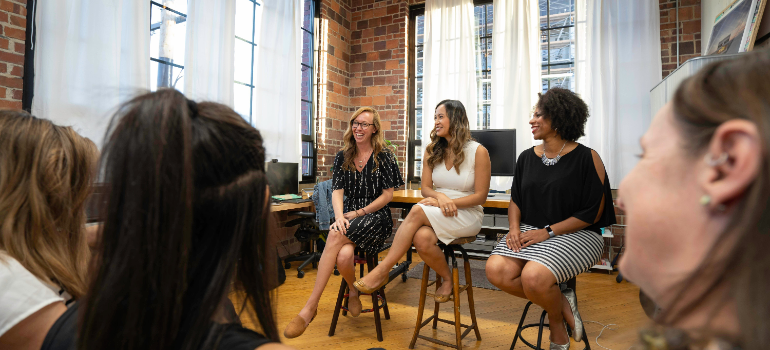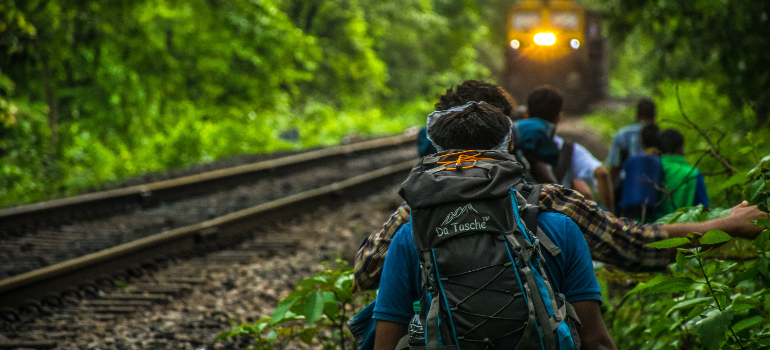Opioid Overdose Prevention Strategies
The rise in opioid addiction and overdoses is not just a statistic; it’s a crisis touching lives everywhere. It’s heartbreaking to see so many families, healthcare workers, and communities grappling with this issue. But there’s always hope. Learning about opioid overdose prevention strategies is a powerful step in turning the tide. For anyone battling addiction, or if you know someone who is, understanding these strategies is key. At Little Creek Recovery, we see the difference this knowledge makes every day. Our approach focuses on empowering individuals and bringing communities together in this fight. We believe that by working hand in hand, we can make a real difference. Let’s take this journey together, learning about prevention strategies that can protect and heal.
Jump to Section
What Is the History of Opioid Use in the United States?
Opioid use in America has a long, complex history, starting back in the late 1800s. Originally, these drugs were a breakthrough for pain relief. However, as the years passed, especially by the late 20th century, they became a common prescription for pain management. This change wasn’t without its problems. During the 1990s, a significant shift occurred. Pharmaceutical companies, pushing opioids as safe and non-addictive, unknowingly opened the doors to widespread misuse. This led to a dramatic increase in addiction and overdoses, turning it into a public health crisis.

As we stepped into the 2000s, the consequences of opioid misuse became clearer. It was more than a health issue – it shook the very core of families and communities. Millions were affected, and overdose deaths surged, creating a ripple effect across society. The situation reached its peak in the 2010s, leading to stricter prescription rules and greater awareness of opioid risks. However, the battle against addiction continued, with heroin and synthetic opioids like fentanyl adding to the challenge. In response, the need for effective heroin addiction treatment has never been more urgent. These programs are a path to recovery, a chance for healing.
Opioid Abuse in the United States Now
Right now, in the United States, we’re facing a heartbreaking reality in our fight against opioid addiction. In just one year, opioids claimed the lives of 48,006 people. Nearly 80% of all overdose deaths stem from opioids. Since 1999, these tragedies have skyrocketed by over 500%. A major player in this crisis is fentanyl, which is involved in almost 20% of these losses. Every day, in clinics and communities, we see the human side of these statistics. It’s a tough battle, but one we are committed to fighting with effective opioid overdose prevention strategies. Every step we take toward prevention is a step toward saving a life.
What Is the CDC’s Definition of Opioid Addiction?
Opioid addiction, according to the CDC, is not just needing a pill. It’s when your body and mind intensely crave opioids, even when you don’t medically need them. It’s your brain chemistry changing, making you feel like you can’t live without these drugs. What leads someone down this path? It’s often a mix of using these drugs for a long time and in high doses. However, it can also be in your genes. Or it could be about something that you’re going through – like living with constant pain, battling mental health challenges, or growing up where drug use was common. Plus, getting opioids has become way too easy, adding fuel to this fire.
But there’s a silver lining – understanding these factors helps in fighting this addiction. Places like prescription drug rehab PA step in here. They don’t just help you break free from drugs – they’re about healing the whole of you, dealing with what’s driving your addiction, and giving you the skills for a healthier future.

What Is an Opioid Blocker for Overdose?
Opioid blockers are medicines that act fast to reverse an opioid overdose. If someone takes too many opioids and suddenly can’t breathe properly, an opioid blocker can save their life. The hero in this scenario is often Naloxone. It jumps into action by attaching itself to the brain’s opioid receptors, pushing out the opioids. This can bring back normal breathing to someone who’s overdosed on opioids, whether it’s heroin, morphine, or prescription painkillers.

Naloxone comes in different forms, like injections or nasal sprays. This makes it easier to use in emergencies. It’s so important that everyone, from family members to passersby, knows the signs of an overdose and how to use Naloxone. Acting fast with it can save lives. However, remember, Naloxone isn’t a cure for addiction. It’s a first step, but those who’ve had an overdose need medical help right away. They often need long-term support to beat addiction. That’s where places like opioid rehab PA make a huge difference. They’re there to help people on their journey to recovery, offering the support and care needed.
What Are the Best Opioid Overdose Prevention Strategies?
In our shared fight against the opioid crisis, it’s important to have a strategy that everyone can understand and engage with. Here are some straightforward, effective ways we can all help prevent opioid overdoses:
- Education and Awareness Programs:
- Community Outreach: We’re taking the message into schools, workplaces, and neighborhoods. It’s all about understanding the risks of opioids and spotting the signs of addiction.
- Public Health Campaigns: Through media, we’re spreading the word far and wide about the dangers of opioid misuse and where to find help.
- Targeted Programs for High-Risk Groups: Focusing on young adults and other high-risk groups, making sure they know about the risks and how to stay safe.
- Role of Healthcare Providers:
- Patient Screening: Before prescribing opioids, doctors are checking for any risk factors of addiction.
- Ongoing Monitoring: Keeping an eye on how patients use opioids and making changes if needed.
- Alternative Pain Management: Encouraging methods other than opioids for pain relief.
- Prescription Practices:
- Responsible Prescribing: Doctors are being careful, prescribing the lowest dose for the shortest time needed.
- Prescription Drug Monitoring: Using technology to track prescriptions and stop the problem of ‘doctor shopping.’
- Patient Education: Making sure patients know how to use opioids safely and understand the addiction risk.
In an emergency, having Naloxone ready can save lives. Most importantly, for those struggling with addiction, getting the right support is pivotal. Services provided by drug and alcohol rehab centers are invaluable. They offer comprehensive care, tackling not just the addiction itself but also its root causes. Together, these steps make up a powerful strategy against opioid overdoses. Through education, careful healthcare practices, and strong support systems, we’re building a safer future, free from the shadow of opioid addiction.

How to Manage Opioid Neurotoxicity?
Dealing with opioid neurotoxicity means tackling the tough effects opioids can have on your nervous system. This condition can cause confusion, restlessness, and even hallucinations. It’s important to manage it with care and understanding. Here’s what we focus on:
- Keep an Eye on Dosage: We make sure the opioid dose is just right – not too much, not too little.
- Switch It Up: If one opioid causes problems, we might try another to ease the symptoms.
- Stay Hydrated and Nourished: Drinking enough water and eating right can make a big difference in recovery.
- Handle Symptoms Carefully: We use specific medicines to calm down any symptoms like agitation.
In cases where more support is needed, a partial hospitalization program steps in. This program is like a bridge – it gives you the intensive care you need without staying in the hospital. You get medical oversight and different therapies, all in a structured setting. It’s a balance of being serious about recovery while also understanding each person’s unique journey. Our goal in managing opioid neurotoxicity is to ease the symptoms and get to the root of opioid dependence. It’s all about a personalized approach, focusing on what each person needs to get better. With the right support and a bit of patience, we can help people move past neurotoxicity and toward a life free from the hold of opioids.
Community and Governmental Efforts in Combating Opioid Abuse
Fighting the opioid epidemic is a team effort that brings together the strength of our communities and the support of our government. All across the nation, we’re seeing incredible efforts at both local and national levels, all focused on one goal: to stop opioid abuse and save lives. In our towns and neighborhoods, people are banding together to spread the word about the risks of opioid misuse. We’re seeing town halls, schools, and local groups stepping up. They’re not just talking about the dangers, but they’re offering support, sharing stories, and offering opioid overdose prevention strategies.

At the same time, the government is playing its part too. They’re working on laws to make sure opioids are prescribed safely, putting money into treatment programs, and looking for pain relief options that don’t lead to addiction. These steps help lessen the severity of the opioid crisis, helping those in the grip of addiction and stopping more people from falling into the same trap. But the real heart of this fight is community involvement. It’s amazing to see people from all walks of life coming together. Whether it’s joining a local outreach program or backing policies to tackle opioid abuse, everyone has a role to play. Together, we’re building a future where our communities are safe from the dangers of opioid addiction.
Role of Rehabilitation and Recovery Programs
In the world of recovery, rehabilitation programs are like a guiding light, helping people step out of the shadow of addiction and into a brighter future. These programs are not just about breaking free from addiction, rather they’re about healing the whole person, inside and out. Here’s a peek into what these programs offer:
- Adventure Program: Think of this as fun with a purpose. Outdoor activities that build self-confidence and teach teamwork, all while having a great time sober.
- Family Program: This brings families into the healing process. It’s about understanding, supporting, and rebuilding those vital bonds.
- Dual Diagnosis Treatment: For those juggling addiction and mental health issues, this program tackles both, offering a more rounded approach to healing.
- Music Therapy: It’s amazing how music can help in healing. It’s a way to express feelings and find emotional balance.
- Cognitive Behavioral Therapy (CBT): This is about changing the thought patterns that feed addiction, turning negative into positive.
- Dialectical Behavioral Therapy (DBT): DBT is all about managing emotions and improving relationships – the key to staying on track.
Every journey through these programs is unique, filled with its highs and lows. Success can look like reconnecting with family, overcoming personal challenges, or just finding new ways to cope with life’s ups and downs. But it’s not always easy. Recovery takes hard work, commitment, and, sometimes, facing a few setbacks. The secret ingredient? Never give up, and have a team that believes in you every step of the way. Every success story is a testament to human resilience and the power of compassionate care.

Find the Best Opioid Overdose Prevention Strategies with Little Creek
Finding the right opioid overdose prevention strategies is important in this fight we’re all in. Teaching people about the dangers, making sure doctors prescribe opioids carefully and having strong support systems in place are key. And let’s not forget about Naloxone, the real hero in emergencies, saving lives when seconds count. Everyone has a role to play – from staying informed to helping others recognize the dangers of opioid misuse. If you or someone you know is battling addiction, reaching out for help is a brave first step. Start your recovery process with us, and together, we can make a big difference. Every bit of effort, every piece of knowledge shared, and every hand extended in support can save a life and lead to recovery. Let’s keep up this work for ourselves, our loved ones, and our communities.